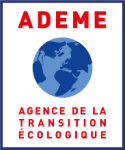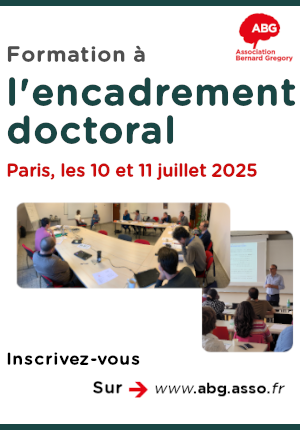AI-driven automated generation of 3D-printable brackets for aircraft electrical harness integration
| ABG-132501 | Sujet de Thèse | |
| 13/06/2025 | Cifre |
- Sciences de l’ingénieur
- Informatique
- Numérique
Description du sujet
Context: Aircraft electrical harness integration involves a two-step process. First, the routing phase focuses on designing the optimal path for the harnesses within the aircraft structure. This step ensures that the harnesses are efficiently and safely positioned to avoid interference with other systems. Next, during the mounting phase, appropriate brackets are selected to securely attach the harnesses to the aircraft structure, ensuring stability and reliability throughout the aircraft's use.
Currently, electrical designers have access to a library of standard components for mounting. However, routing in some aircraft structures requires the development of new types of brackets to meet integration constraints. Moreover, these new components must comply with material, mechanical and design constraints to validate the design.
While the routing phase has been automated, the mounting phase still requires manual intervention. To fully automate the harness integration design process, new tools are needed to automate this critical phase.
Objectives of the thesis: This research aims to develop and evaluate an AI-driven method for the automatic generation of optimized 3D bracket designs for aircraft electrical harness integration (see Figure 1). The proposed system will leverage the 3D environment of the aircraft structure and the predefined harness path to ensure accurate routing and seamless integration. Furthermore, it will incorporate manufacturing process constraints and design rules to generate solutions that comply with mechanical and structural requirements.
Methodology: Starting with an analysis of the state of the art, the first step will focus on formalizing the problem and requirements, with particular attention to the functional, structural and mechanical requirements of the brackets. The modeling of the predefined harness path will also be studied in detail. Furthermore, the manufacturing constraints and design rules will be systematically formalized.
Building on SAFRAN’s extensive experience in designing such brackets, data will be col-lected to create and populate the database required for training. This dataset will include representative 3D environment data from aircraft, covering mounting interfaces and sur-rounding structures, as well as existing bracket designs. To enhance robustness, the da-taset will be augmented with synthetic variations of bracket geometries and preprocessed to standardize and prepare the data for training.
Given the nature of CAD models, graph-based and sequence-based representations will be explored, as these have recently shown promising results in learning tasks. Other rep-resentations, such as point clouds, voxels, and meshes, will also be considered and may serve as intermediate representations during the training phase.
The development of the generative AI model will then proceed, leveraging approaches such as conditional GANs, variational autoencoders, or diffusion models. These models will be conditioned on environmental and functional constraints to generate viable bracket geometries. To ensure compliance with mechanical and manufacturing requirements, con-straint-based optimization techniques (such as physics-informed neural networks or to-pology optimization) will be integrated into the generative pipeline.
Depending on the adopted AI model, the output geometries may need to be converted into either editable or dumb CAD models that are ready for manufacturing. Once trained, the proposed approach will be validated against known feasible solutions using quantita-tive metrics (such as weight, stiffness, and harness path compliance) and will also involve expert qualitative assessments to ensure the generated bracket designs meet aircraft in-stallation standards.
Prise de fonction :
Nature du financement
Précisions sur le financement
Présentation établissement et labo d'accueil
Le LISPEN développe des recherches dans le domaine des systèmes dynamiques multi-physiques et virtuels, ayant comme champ d'application privilégié l'Industrie du Futur. La santé, le sport et le bâtiment font également partie des domaines applicatifs investigués par les équipes du laboratoire.
Les travaux de recherche du LISPEN s’articule autour de quatre grandes thématiques :
- Ingénierie système et représentation numérique
- Analyse, simulation et contrôle des systèmes
- Interaction Humain-Système
- Transformation industrielle
Site web :
Intitulé du doctorat
Pays d'obtention du doctorat
Etablissement délivrant le doctorat
Ecole doctorale
Profil du candidat
- Master’s degree in Aerospace, Mechanical Eng., Computer Science, or related field
- Strong interest in AI, CAD, and design automation
- Experience with optimization or 3D modeling is a plus
Vous avez déjà un compte ?
Nouvel utilisateur ?
Vous souhaitez recevoir nos infolettres ?
Découvrez nos adhérents
 ANRT
ANRT  Nokia Bell Labs France
Nokia Bell Labs France  Ifremer
Ifremer  Tecknowmetrix
Tecknowmetrix  ADEME
ADEME  CESI
CESI  TotalEnergies
TotalEnergies  MabDesign
MabDesign  ONERA - The French Aerospace Lab
ONERA - The French Aerospace Lab  CASDEN
CASDEN  Aérocentre, Pôle d'excellence régional
Aérocentre, Pôle d'excellence régional  SUEZ
SUEZ  PhDOOC
PhDOOC  Groupe AFNOR - Association française de normalisation
Groupe AFNOR - Association française de normalisation  MabDesign
MabDesign  ASNR - Autorité de sûreté nucléaire et de radioprotection - Siège
ASNR - Autorité de sûreté nucléaire et de radioprotection - Siège  Généthon
Généthon  Laboratoire National de Métrologie et d'Essais - LNE
Laboratoire National de Métrologie et d'Essais - LNE  Institut Sup'biotech de Paris
Institut Sup'biotech de Paris







